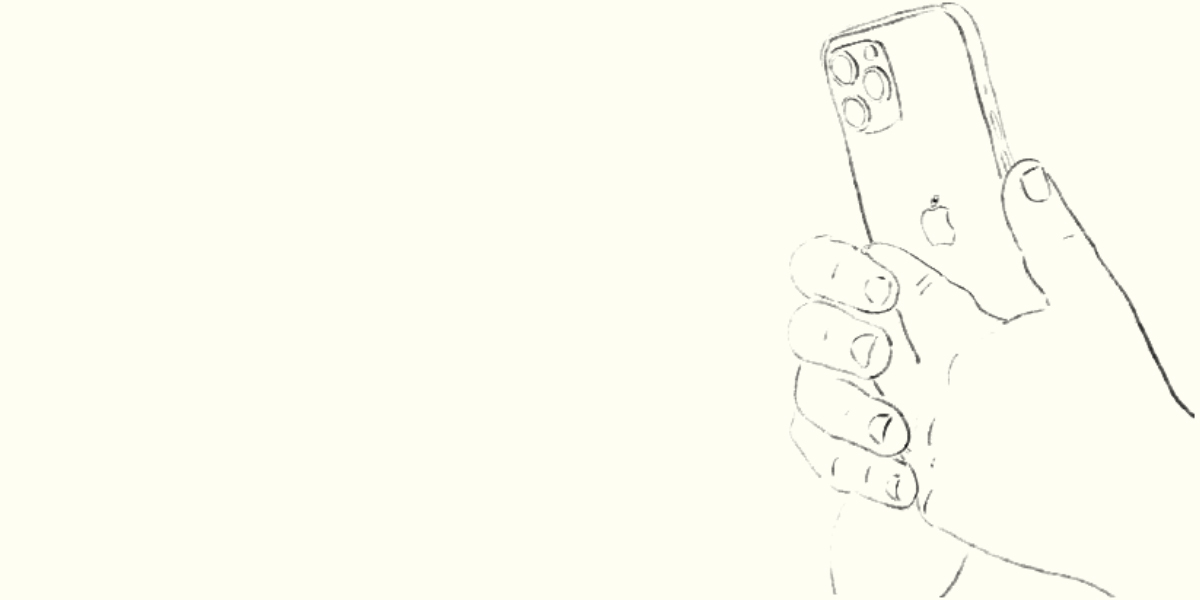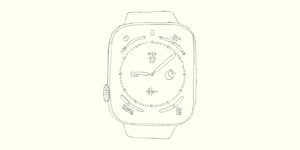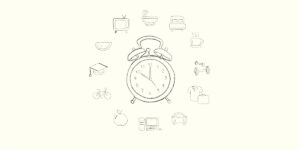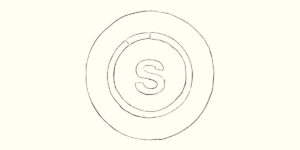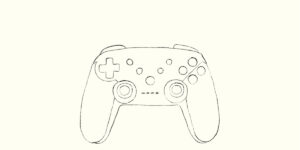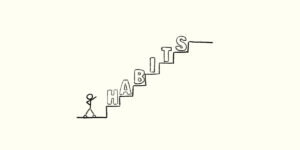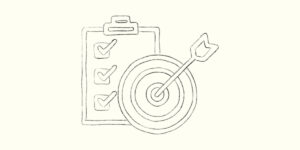In this article, I will introduce methods for a digital detox.
The methods I’m going to introduce are only those I have personally tried and found effective.
This article is recommended for people who:
Benefits of reading this article:
What is digital detox?
First, let’s confirm the definition of the theme of this article, which is digital detox.
a period of time during which you do not use mobile phones, computers, etc., because you usually use these devices too much
Cambridge dictionary
In other words, it means creating periods of time where you don’t use digital devices to prevent prolonged usage of them.
Importance of digital detox
In essence, digital detox allows us to reclaim the time we spent on our smartphones.
And you can create time for meaningful activities.
On average, people spend about 3 hours and 15 minutes on their smartphones daily.
Source: Rescue Time
Therefore, by engaging in a digital detox, one can allocate 3 hours and 15 minutes to meaningful activities.
I was addicted to digital devices

Have you ever regretted spending too much time on social media or game?
I’ve experienced this regret at least a million times!
“I didn’t accomplish anything today.”
“What did I do all day?”
Feeling this way, I’m shocked by my lack of self-control.
I didn’t want to feel like this anymore!
That’s why I started digital detox.
If you’ve ever felt the same way, you should consider starting a digital detox.
Digital detox is difficult to continue
I had resolved to reduce my usage time of digital devices, but digital detox proved to be a challenging journey.
There are three main reasons for this.
The high addictive nature of digital devices
Smartphone apps are designed to captivate users and keep them engaged for as long as possible.
According to the book “Insta-Brain,” many smartphone apps are engineered to trigger dopamine releases in users.
For instance, in many social media apps, refreshing the feed reveals new content, providing a thrill of the unknown and triggering dopamine release.
This dopamine release brings us pleasure and causes us to lose our self-control.
The underlying principle is similar to a slot machine.
So, when we use digital devices, we lose our self-control.
In fact, I’ve deleted Twitter multiple times, however, the blue bird returns to my smartphone like a phoenix.
Indispensability in daily life
Living without a smartphone is almost impossible.
You can’t contact your friends without social media.
Without a navigation app, getting to places you are going to for the first time is impossible.
You can’t even listen to music while on the go.
Is there anyone in modern society who could endure such a lifestyle?
Difficult to find sustainable solutions
To avoid the addictive nature of smartphones, some books suggest solutions like deleting あall social media apps or switching to a flip phone.
But what do you think of these ways?
In my opinion, such methods are unlikely to be sustainable in the long run.
You might achieve them temporarily, but many people eventually return to their previous habits.
This is because smartphones are highly addictive and have become essential tools in our lives.
The digital detox Approach That Worked for Me
After trying various methods, I realized the importance of accumulating small adjustments.
It was difficult to sustain when attempting fundamental solutions.
Implementing fundamental solutions often requires enduring many situations.
For instance, using a flip phone for digital detox would be too inconvenient.
On the other hand, with small adjustments, it’s possible to continue without much hardship.
Digital detox is not a temporary endeavor, continuity is the key point.
Below, I will describe the small adjustments I have implemented.
Set realistic goals

Set goals that you can achieve.
Setting goals that are too high leads to unrealistic solutions.
The key is to use technology wisely, not to distance ourselves from it entirely.
My goal was to reduce daily smartphone usage by one hour.
This alone amounted to a reduction of 30 hours per month.
If you had an extra hour of free time each day, what would you do?
Would you exercise?
Read?
Ensure more sleep?
You can challenge yourself to tackle things you’ve been putting off.
Identifying Harmful Tools for You

We should identify the harmful digital tools for you.
This is because the digital devices I use consist of both beneficial and detrimental tools.
For instance, YouTube, when used for studying, is beneficial for me.
However, time spent on Instagram yields nothing productive for me.
These are both social media platforms, but there are beneficial and non-beneficial tools within them.
By using features like Screen Time, you can track usage times for each app and identify which tools are harmful.
How to check screen time for iPhone user
How to check screen time for Android user
Once you have a clear understanding of the issues, it becomes easier to devise specific solutions.
Turn off notifications

This is a basic measure but highly effective.
App notifications were constantly diverting my attention and time.
To avoid such distractions, it’s advisable to turn off notifications.
How to turn off notifications for iPhone user
How to turn off notifications for Android user
Use a content blocker.

I had a habit of checking the NBA website during my free time.
Because I always felt the urge to know what happened in the latest games.
However, such behaviour was taking away my time.
Moreover, I often felt somewhat drained after checking the NBA website.
If you’ve had similar experiences, consider using a content blocker.
My recommended content blocker app is the Blank page. This content blocker is available for free.
This app allows you to set up content blocks for specific URLs.
It offers a more precise content-blocking feature compared to Screen Time.
Delete social media apps
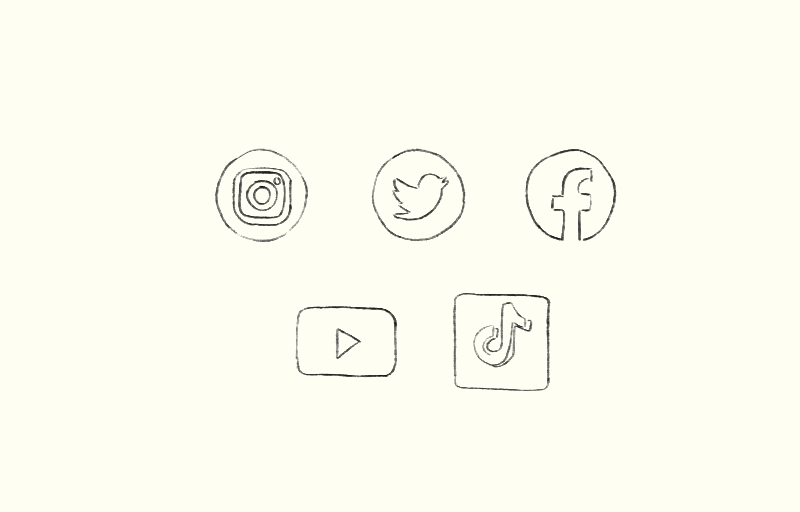
Social media apps are highly addictive. I find myself wanting to check social media updates multiple times a day.
Therefore, I have deleted social media apps.
However, the issue lies in messaging.
For this, I recommend accessing social media through a browser.
This is because it becomes more bothersome to access it.
Block unnecessary recommended content.

When using social media, recommended content is often displayed.
This includes recommended videos, posts, etc.
Blocking these can significantly reduce the time spent on social media.
Use analog tools

By using analog tools, you can reduce the frequency of interacting with digital tools.
When you pick up your phone to use a note-taking app, you might end up checking social media.
To avoid such situations, I use paper task management notebooks .
It’s important to minimize touching your phone anyway.
To apply these principles, I use various analog tools such as alarm clocks and physical books.
Results of my Digital Detox
By implementing the above measures, I have been able to reduce the time spent on digital devices.
There has been a significant change, particularly in the time spent using smartphones.
Before starting digital detox, I used to spend about 3 hours a day on my smartphone.
However, since starting the digital detox, it has decreased to around 1 hour and 30 minutes a day.
I have been able to utilize this time for blogging, so I truly believe that starting the digital detox was a good decision.
Furthermore, I feel more mentally energized than before.
This is probably because the release of meaningless dopamine has decreased, and my brain no longer feels exhausted.
If you are struggling with prolonged use of digital devices, I strongly encourage you to try digital detox.
By implementing the practices introduced in this article, it should be possible to reduce digital device usage time by one hour per day.
I sincerely hope that this content has been helpful to you.
If you have any questions, please feel free to contact me through the social media links below.
I also make videos, so I’d be happy if you could check them out!
Sayonara

